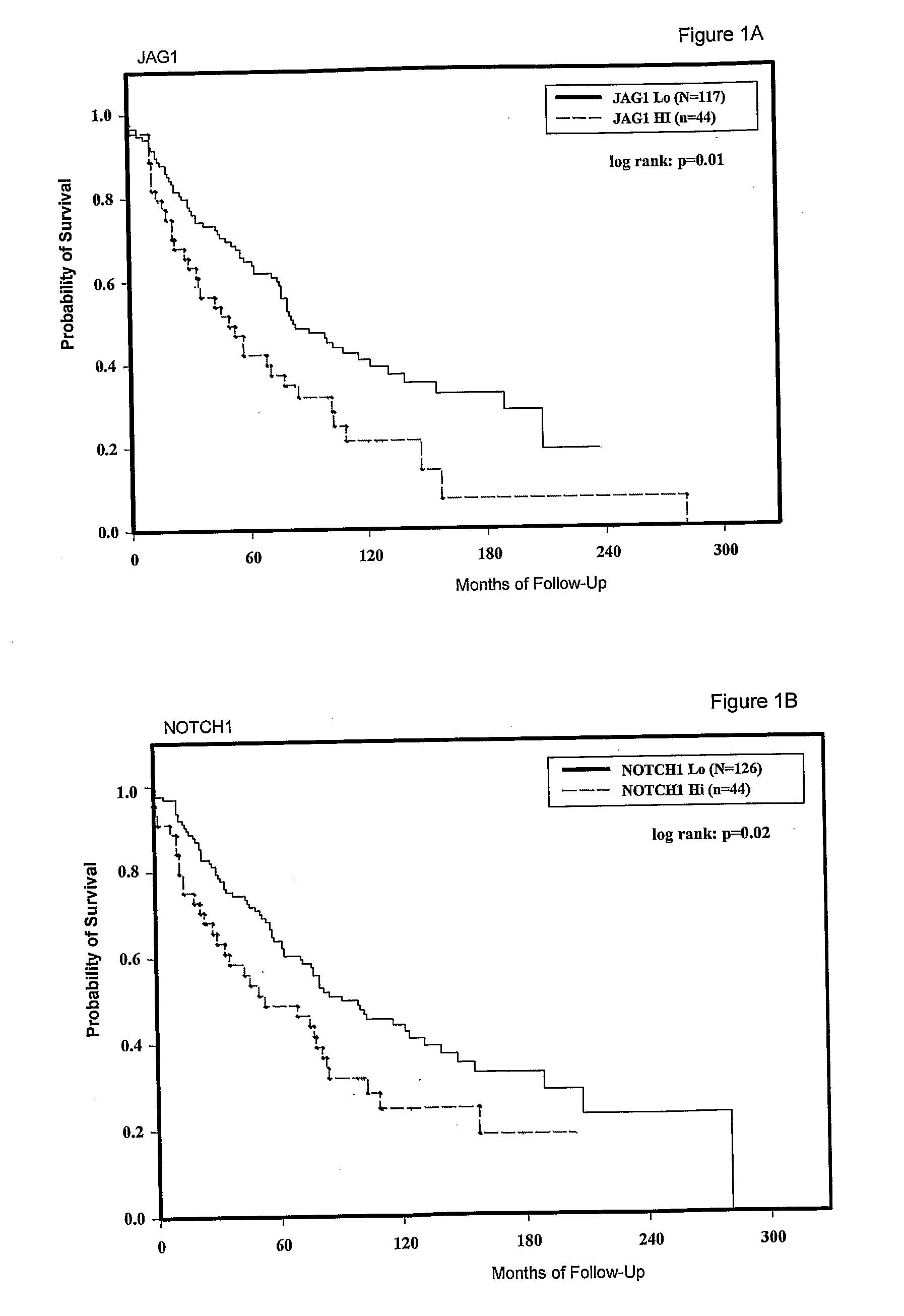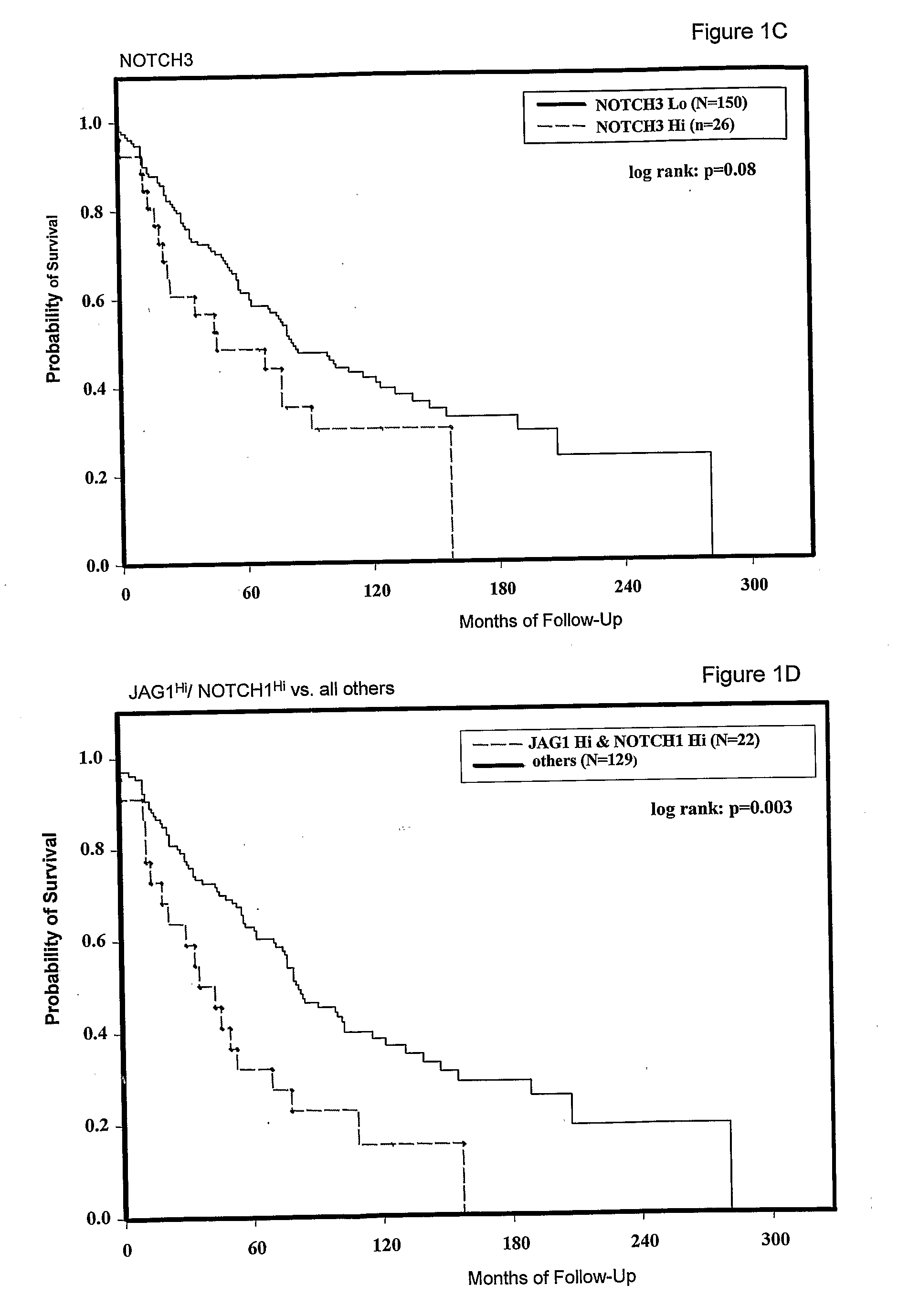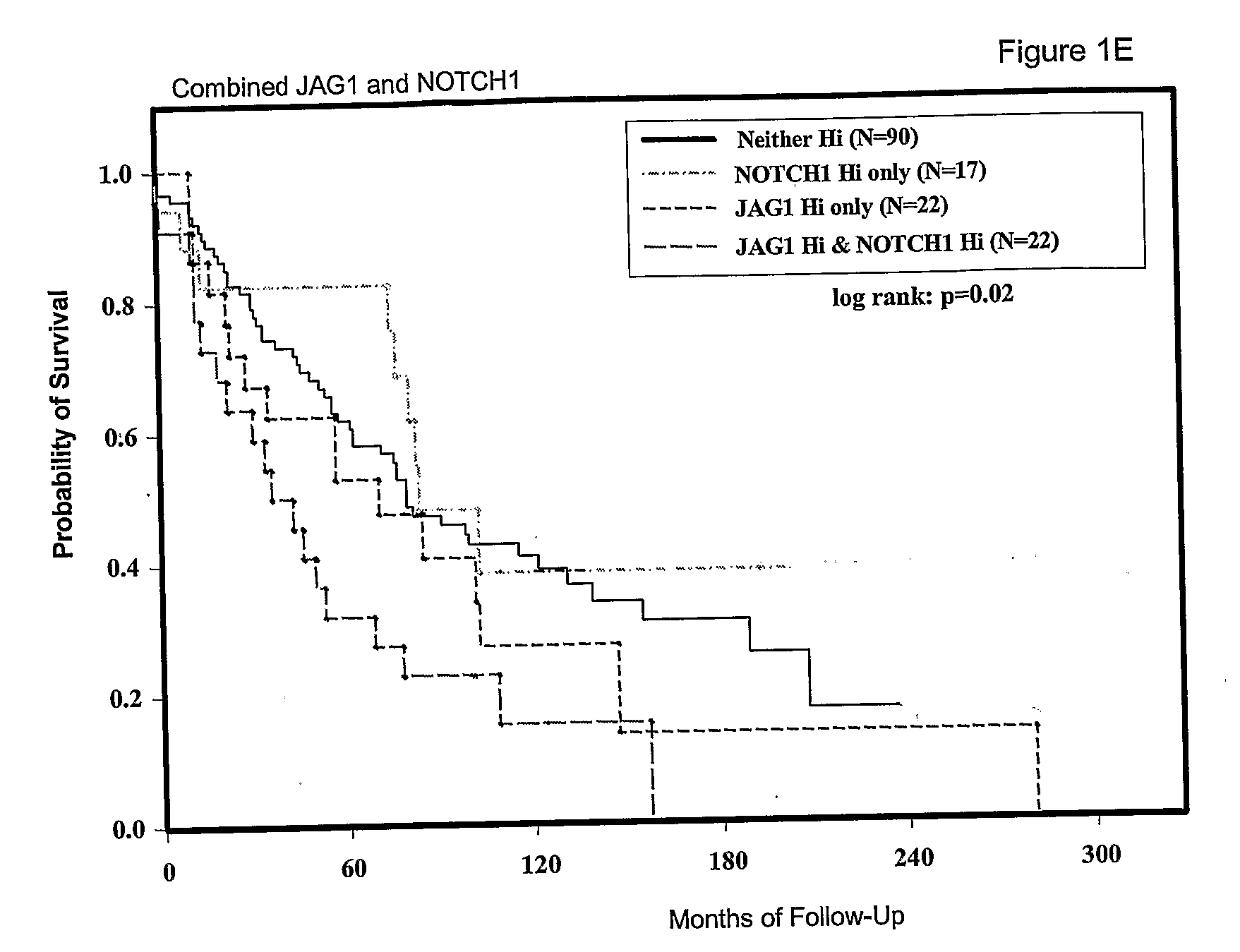Methods for Cancer Prognosis
- Summary
- Abstract
- Description
- Claims
- Application Information
AI Technical Summary
Benefits of technology
Problems solved by technology
Method used
Image
Examples
example 1
Patients and Tumor Samples
[0074]Tumor tissue examined in this study was obtained from patients undergoing surgery for palpable tumors greater than 2 cm in diameter at the University Health Network (Toronto, Ontano) between December 2002 and June 2004. Overall patient and tumor characteristics are shown in Tables 1 and 2. Tumors were examined for mRNAs encoding Notch1, 2, 3 and 4, Jagged 1 and 2, Delta 1, 3 and 4, Pref 1 / DIK and Manic, Radical and Lunatic Fringe. Probes used are shown in Table 3. For each gene, from 20 to 50 invasive ductal carcinomas (IDC) were surveyed, as well as several invasive lobular carcinomas (ILC) and carcinomas in situ (CIS) (Table 2). For most genes, mRNA expression levels were analyzed in 20 tumors. Due to limitations of specimen size, not all probes could be used on the same samples. For Jagged1, Notch1, Notch3 and Pref1 / DIk, up to 50 tumors were screened.
Generation of Notch Activation System Probes and Optimization of RNA In Situ Hybridization for Huma...
example 2
Correlation of Notch Receptor (Notch1 and 3) and Ligand (Jagged1) Expression with Poor Pathological Prognostic Features in Breast Cancer
[0086]To directly test for expression of Notch ligands (JAG1, JAG2, DLL1, DLL3 and DLL4) and receptors (NOTCH1, 2, 3, and 4) in human breast cancer, as well as in associated blood vessels and stroma, we used mRNA in situ hybridization. Our initial screen was performed on tumors greater than 2 cm in diameter obtained from patients at the University Health Network (UHN—Toronto, Ontario) (Table 1). Within this cohort we identified a group of tumors that co-expressed very high levels of Notch ligand, Notch receptor and, in some cases, Fringe gene mRNA (Table 4). Therefore, we analyzed Notch ligand and receptor gene expression in a group of up to 50 tumors, and tested for correlations between expression and pathological data. The DLL1, JAG1, and JAG2 ligands were expressed at very high levels in 2 / 22, 6 / 47 and 9 / 22 tumors respectively (Table 4). The Pref...
example 3
[0088]The expression of JAG1, NOTCH1 and NOTCH3 was analysed in a large panel of breast cancers with associated patient follow up data. Tissue microarrays (TMA) were obtained from the US National Cancer Institute Cooperative Breast Cancer Tissue Resource (CBCTR). These TMAs were constructed from a cohort of tumors that were ⅓ node-negative, ⅓ node positive and ⅓ metastatic (n=64 for each group). We performed in situ hybridization to analyze tumor-specific expression. For these experiments, the system was modified for gene expression quantitation by using image analysis software-to determine the concentration of activated silver grains in multiple areas of tumor for each sample, as described above. Expression data for JAG1, NOTCH1 and NOTCH3 are tabulated together with data on individual patient and tumor characteristics (Table 6).
[0089]We first tested for relationships between expression of each gene and overall patient survival. JAG1 expression data showed a dose-dependent relation...
PUM
| Property | Measurement | Unit |
|---|---|---|
| Volume | aaaaa | aaaaa |
| Size | aaaaa | aaaaa |
| Size | aaaaa | aaaaa |
Abstract
Description
Claims
Application Information
 Login to View More
Login to View More - R&D
- Intellectual Property
- Life Sciences
- Materials
- Tech Scout
- Unparalleled Data Quality
- Higher Quality Content
- 60% Fewer Hallucinations
Browse by: Latest US Patents, China's latest patents, Technical Efficacy Thesaurus, Application Domain, Technology Topic, Popular Technical Reports.
© 2025 PatSnap. All rights reserved.Legal|Privacy policy|Modern Slavery Act Transparency Statement|Sitemap|About US| Contact US: help@patsnap.com



